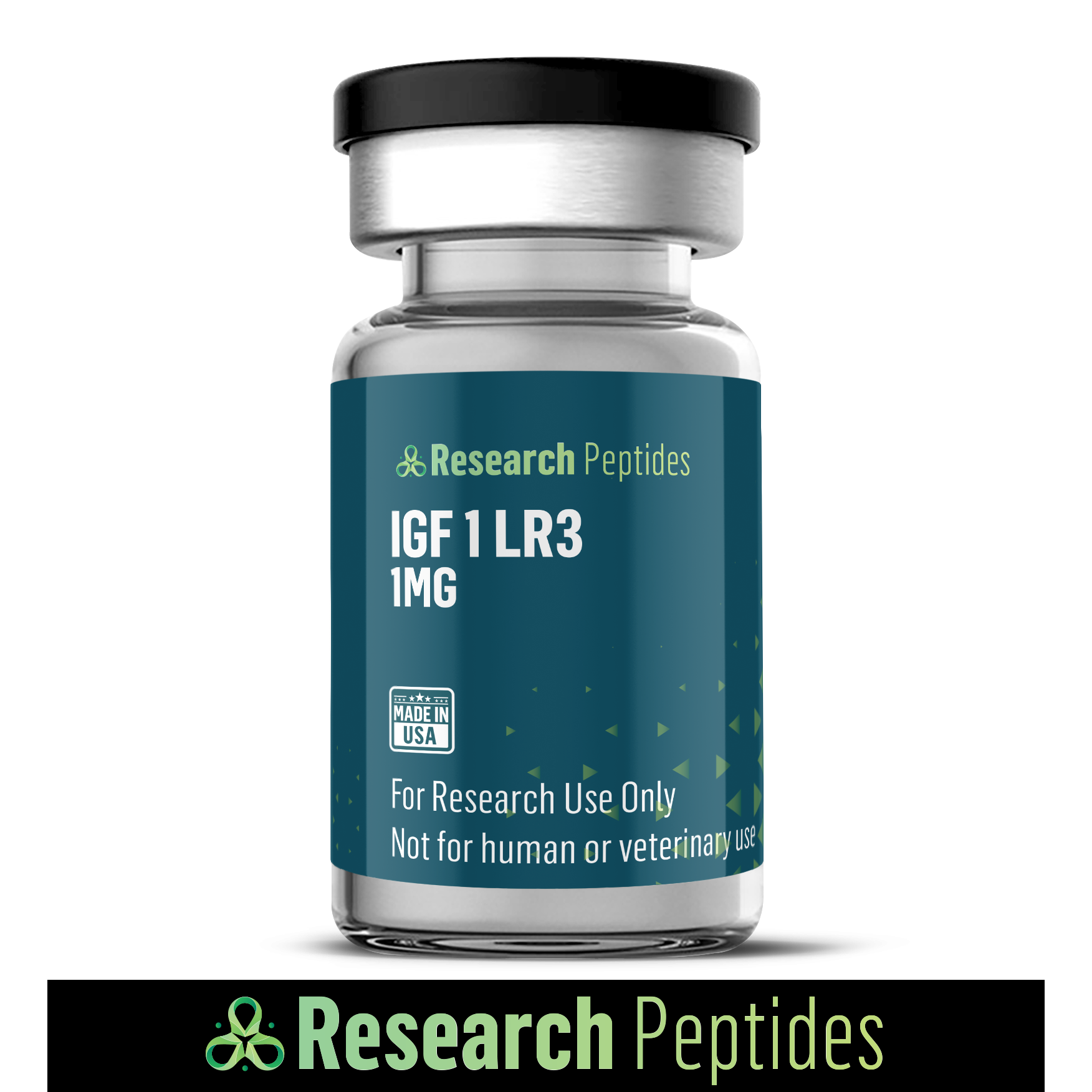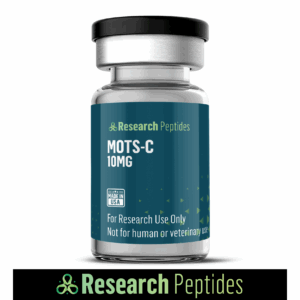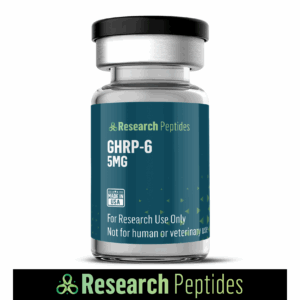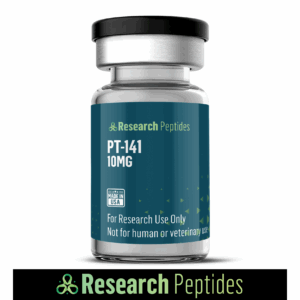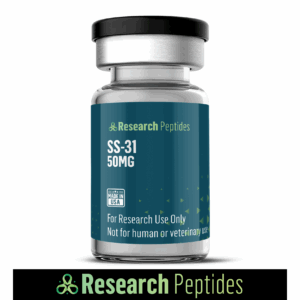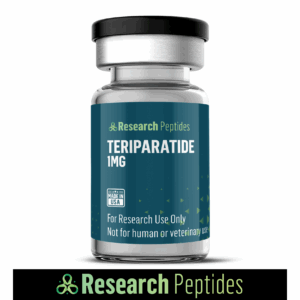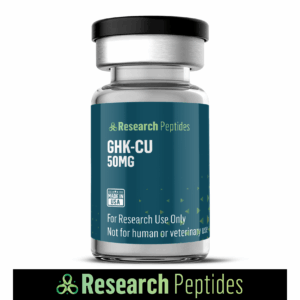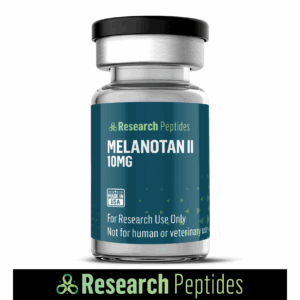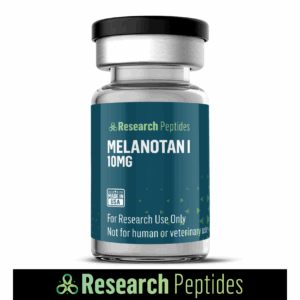What is IGF1 LR3?
IGF1-LR3 (Insulin-like Growth Factor-1 Long R3) is a high-purity synthetic peptide, an 83-amino acid analogue of IGF-1 with an extended half-life due to arginine substitution at position 3 and a 13-amino acid extension. Designed exclusively for laboratory research, IGF1-LR3 is used to investigate cellular growth, proliferation, and repair mechanisms. Supplied as a lyophilized powder for reconstitution, this peptide provides researchers with a potent tool to study anabolic and regenerative pathways in experimental models.
Research Applications:
IGF1-LR3 is extensively studied in preclinical research for its role in promoting muscle hypertrophy, tissue repair, and metabolic regulation in cellular and animal models. Investigations focus on its ability to enhance protein synthesis, stimulate myoblast proliferation, and support muscle recovery by binding to IGF-1 receptors and activating PI3K/Akt signaling pathways. Research also explores its effects on fat metabolism and insulin sensitivity, contributing to studies on weight management and metabolic health. Its prolonged activity makes it a key compound for investigating muscle growth, injury repair, and anabolic responses.
Research Links:
-
Philippou, A., et al. (2007). “The role of insulin-like growth factor-1 (IGF-1) in skeletal muscle physiology.” In Vivo, 21(1), 45-54. https://pubmed.ncbi.nlm.nih.gov/17354614/
-
Reviews IGF-1’s role in muscle growth and repair, relevant to IGF1-LR3’s anabolic effects.
-
-
Adams, G. R. (2000). “Insulin-like growth factor I signaling in skeletal muscle and the potential for cytokine interactions.” Medicine & Science in Sports & Exercise, 32(7 Suppl), S369-S376. https://pubmed.ncbi.nlm.nih.gov/10910296/
-
Explores IGF-1 signaling in muscle hypertrophy and recovery, applicable to IGF1-LR3 research.
-
-
Schiaffino, S., & Mammucari, C. (2011). “Regulation of skeletal muscle growth by the IGF1-Akt/PKB pathway: Insights from genetic models.” Skeletal Muscle, 1, 4. https://doi.org/10.1186/2044-5040-1-4
-
Discusses IGF-1’s role in muscle growth via Akt signaling, relevant to IGF1-LR3 studies.
-
-
Velloso, C. P. (2008). “Regulation of muscle mass by growth hormone and IGF-1.” British Journal of Pharmacology, 154(3), 557-568. https://doi.org/10.1038/bjp.2008.153
-
Examines IGF-1’s impact on muscle mass and metabolism, with implications for IGF1-LR3’s effects.
-
-
Barton, E. R. (2006). “The ABCs of IGF-I isoforms: Impact on muscle hypertrophy and implications for repair.” Applied Physiology, Nutrition, and Metabolism, 31(6), 791-797. https://pubmed.ncbi.nlm.nih.gov/17213896/
-
Investigates IGF-1 isoforms, including long-acting variants like IGF1-LR3, in muscle repair and hypertrophy
-
Product Note:
For laboratory use only. Not for human or veterinary use. Proper handling and storage (-20°C) are required to maintain stability. Ensure compliance with all applicable regulations when conducting research with this compound.
Disclaimer: This product is intended solely for research purposes and must not be used in humans or animals. Purchaser assumes full responsibility for safe and compliant use.

